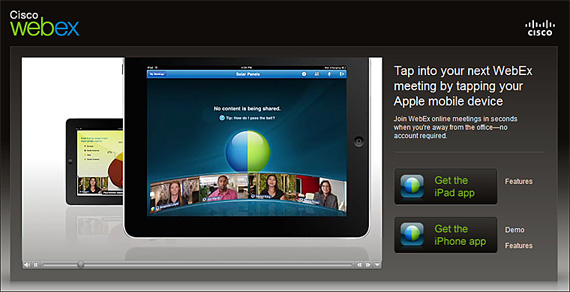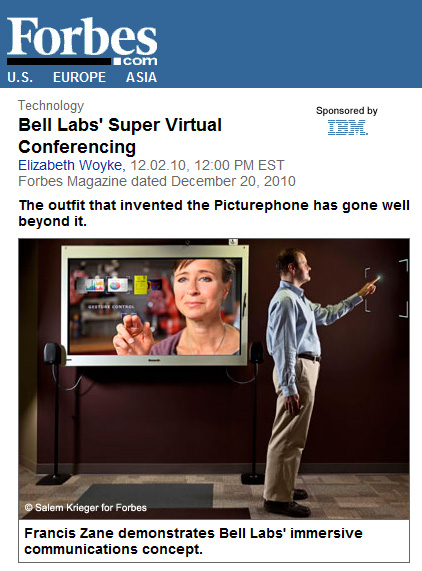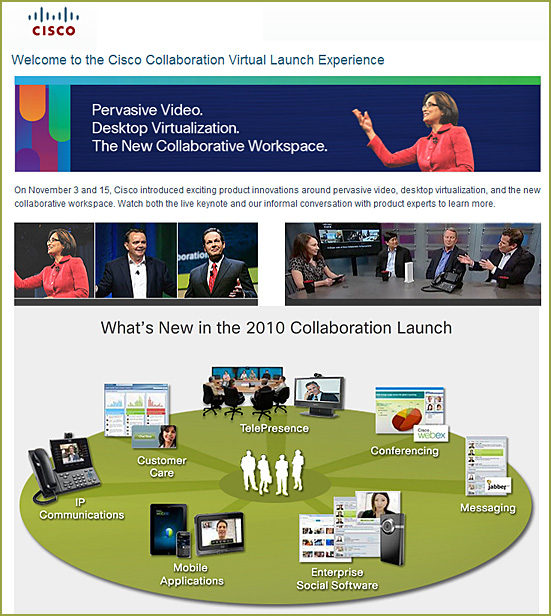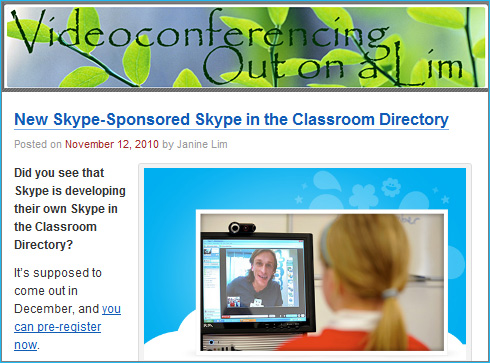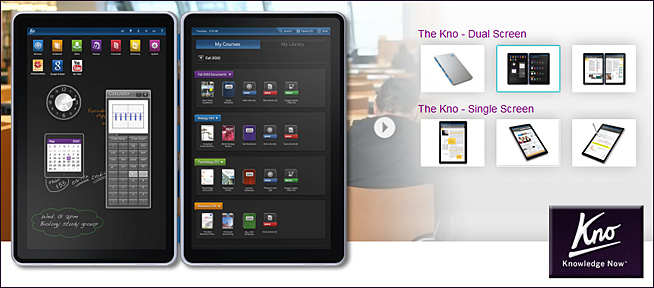Also see:
Gee Rittenhouse sees a future in which an executive running late for a meeting pulls his car to the side of the road and calls into a videoconference. He sets his phone on the dash and adjusts the settings so his image appears to the others as if he were in the same boardroom with everyone else. He chats with the people onscreen and pulls up a virtual PowerPoint, flipping through slides with a gestural swipe through the air. When it’s over, these people separated by thousands of miles go back to their physical surroundings having spent the last half hour feeling like they were a few feet apart in a conference room.
This vision is becoming reality at Bell Labs, where Rittenhouse is research chief. Alcatel-Lucent’s innovation shop, the same one that brought you the Picturephone in the 1960s under AT&T, recently unveiled its great-grandchild, an application called immersive communications. It combines all the “realities” into one: physical, virtual and augmented (reality superimposed with sound or graphics).
Broadband satellite network gets funding for 2013 launch — from wired.co.uk by Mark Brown
Skype hits new usage record — from Mashable.com by Adam Ostrow
Cutting the Pay TV Cord, Chapter 5: Unlimited Internet TV — from Phil Leigh
In short, often there is no reason why modern flat panel TV screens cannot function as giant monitors for up-do-date computers.
Thus a growing number of us are attaching computers to our TVs. The trend is especially prevalent for WiFi enabled computers because they can connect over a home network and thence to the Internet. In such configurations computers – commonly dedicated laptops – function as Internet gateways for televisions. They transform TVs into dual function devices normally controlled from a comfortable viewing distance with ordinary TV remote units.
Also see:
- Cutting the Pay TV Cord, Chapter 4: Broadcast Reception
- Cutting the Pay TV Cord, Chapter 3: Televisions
- Cutting the Pay TV Cord, Chapter 2
- Cutting the Pay TV Cord, Chapter 1
If you’re tired of paying for television service you’re not alone. The number of domestic pay TV subscribers declined for the first time ever at the end of the June, 2010 calendar quarter. The drop was about 200,000. It declined again at the end of the September quarter by an estimated 100,000. Since there are over 95 million pay TV subscribers, the industry publicly minimizes the significance of the trend reversal. But they are wrong to do so. It’s been a growth business for half a century. It’s run its course and Internet video is the successor.
- What is the New Workspace? — from Cisco by John Gaudin
Take wikis, videos, phone calls, document sharing, same time editing, application sharing, messaging, conferencing, workflow, think of all aspects of your work and imagine it digital and integrated with any other tool you’d use, accessed from any device regardless of operation system and location. Is your workspace really the device you’re on, or is it what that device ultimately connects into and enables you to do?
Damaka extends enterprise video conferencing to major smartphones and tablet endpoints — from finance.yahoo.com
Mobile UCC solution offers industry-first interoperability with enterprise video conferencing endpoints, including Tandberg and Polycom
RICHARDSON, Texas, Oct. 18 /PRNewswire/ — Damaka®, a technology pioneer in Mobile Unified Communications and Collaboration (UCC), today unveiled Enterprise Mobile Video™, delivering enterprise video conferencing to smartphones and tablets.
From DSC:
As I like to say, technology is great when it works — but when it doesn’t, there are few things more frustrating that exist in the world today!
Skype falls short as a web conferencing tool for everyday business use says webconferencing-test.com — from PRWeb.com
Millions have been using Skype privately for years. With its upgraded functionality, Skype now tries to appeal to business users in search of a web conferencing solution but cannot deliver. In a test of its functionalities and a following comparison to well-established web conferencing solutions, webconferencing-test.com revealed some major drawbacks.
Also see:
Skype: Great for private chats and calls, not so great for web conferencing — from webconferencing-test.com









